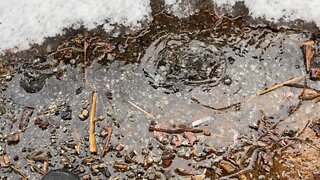Tour Guide Explains Old Information About Dahab And Sinai Egypt
Dahab attracts large numbers of tourists. It is world-renowned for its windsurfing. Reliable winds provide superb flat-water conditions inside Dahab's sand spit.
Further away from shore, wavy conditions couple with strong winds to provide formidable conditions for keen windsurfers. However, in recent years, the lagoon inside the sand spit has been overtaken by kitesurfers, with two Russian-owned schools opening right on the beach. SCUBA diving, free-diving and snorkelling are also popular activities with many reefs immediately adjacent to waterfront hotels.
The nearby Blue Hole (nicknamed "The World's Most Dangerous Diving Site") and Canyon are internationally famous dive spots. The increasing destruction of coral from reckless divers/dive centres diving is a pressing issue that is causing some worry, sparking the need to regulate dive centres more thoroughly.
Land-based activities include rock climbing, camel riding, horse riding, cycling, mountain biking trips, jeep and quad bike trips. Mount Sinai is a two-hours drive, with Saint Catherine's Monastery being a popular tourist destination.
Historically, most visitors to Dahab have been backpackers travelling independently and staying in hostels, motels or guesthouses in the Masbat area. In recent years, development of hotels in the Medina area has facilitated the arrival of a wider range of tourists, many of whom visit Dahab specifically to partake in the surfing, windsurfing, diving, kite surfing, sailing, and other activities.
The word Dahab is Egyptian Arabic for gold and is possibly a reference to the geographic locality; gold washed down from the desert mountains may have accumulated on the alluvial flood plain where the town was built. The name may also be a reference to the colour of the sands to the south of the town itself. Some locals attribute the name to the colour of the sky just after sunset.
One local story concerning the town's name is that it stems from the floods that wash through the town every five or six years. Larger than average seasonal storms in the mountains cause a great rush of water to surge down to the sea, dragging with it great amounts of sand. During this time, the town is cut in two by the flood, and the bay is stirred up and the sands turn it a golden yellow.
This typically lasts a few days, and has caused damage and loss of life in the past as people were unaware of the sudden onset and the force the water moves at. Today, locals are ready when they see the clouds over the mountains, and anyone lucky enough to witness it will remember it for a long time.
-
 0:33
0:33
JodyAlbertMaas
2 years agoInformation about my videos on my blog
19 -
 26:41
26:41
Science & Futurism with Isaac Arthur
1 day agoAliens vs AI
13.2K15 -
 32:22
32:22
intheblues
1 day agoMy Entire Electric Guitar Collection
22.4K6 -
 22:25
22:25
TheTapeLibrary
23 hours agoWhen They Take Over Your Television (Haunting Tales Of Broadcast Signal Intrusions)
31.1K17 -
 1:28:13
1:28:13
ReasonTV
17 hours agoJesse Singal: Should Kids Medically Transition?
36.2K14 -
 6:39
6:39
Chrissy Clark
14 hours agoBurning Gender Studies Degree In Solidarity With Palestine?!
30.4K35 -
 34:14
34:14
CarlCrusher
1 day agoExploring the Skinwalker Carvings - Carl Crusher: Part 5
31.2K7 -
 7:37
7:37
Hannah Barron
19 hours agoDid I Really Just Catch My Biggest Blue Cat Ever?
16.9K9 -
 2:42:10
2:42:10
Price of Reason
17 hours agoUniversal vs. Disney, Cobra Kai Season 6, Mufasa FAIL, Anti-Gamer Rhetoric Increases w/ Dreadroberts
21.8K5 -
 7:19:32
7:19:32
SNEAKO
13 hours agoWE'RE SO BACK
140K90